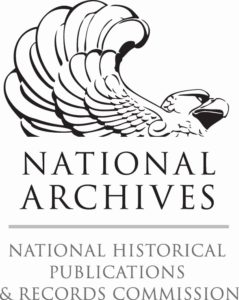Public Domain
Many of the historical materials in your collections may be in the public domain, which means that copyright protections do not apply. Materials in the public domain may be freely used by anyone, for any use, without permission or attribution. In addition, whether the materials are in the public domain or in copyright, any digital resources you make available online can be used by the general public for activities defined as Fair Use by Section 107, United States copyright law, including teaching, research, and news reporting.
What’s in the Public Domain?
More than you might think! To figure it out, you’ll need to know whether an item is considered published or unpublished, and, if possible, the date it was created.
Published works include:
- Books and booklets
- Brochures and pamphlets
- City directories and phone books
- Maps
- Newspapers and newspaper clippings
- Postcards without writing on the back
- Yearbooks
Copyright assessment for published works:
| If publication date is . . . | Copyright status is . . . |
|---|---|
| 1978 or after | In copyright |
| 1926-1977 with a copyright notice (© or “Copyright”) | May be in copyright |
| 1926-1977 without a copyright notice | No copyright (public domain) |
| 1926** or before | No copyright (public domain) |
**In 2022. This is a rolling date! Each year on January 1, another year of published content passes into the public domain.
Unpublished works include:
- Architectural drawings
- Diaries
- Ephemera
- Letters
- Manuscripts
- Photographs (unless you are sure they were published)
- Postcards with writing on the back
Copyright assessment for unpublished works:
| If creator is: | Copyright term is: | In 2022, it’s in the public domain if: |
|---|---|---|
| Known | 70 years after death of creator | Creator died before 1952 |
| Unknown | 120 years after date created | Created before 1902 |
Unpublished items that are simply a collection of facts generally do not need to be assessed and can be considered public domain. These include items such as ledgers and account books, land records, tax records, deeds, invoices, receipts, bills, and permits.
In Copyright? Get Permission!
If materials are not in the public domain, seek permission from the copyright holder to put them online. Copyright may lie with the original photographer, artist, or author; their heirs (if legally transferred through a will, for instance); or, in the case of works for hire, with the agency that authorized the creation of the original work (for example, the copyright to an image from a staff photographer working for a newspaper or magazine would, in most cases, belong to the newspaper or magazine publisher). Keep a record of when you contacted rights holders and what response (or lack of response) you received.
Orphan Works
What if I can’t find the rights holder? Or what if I get no response after multiple attempts to contact them? It may be impossible to identify or locate the rights holder for many historical materials. In that case, the materials are considered orphan works. Many libraries and museums choose to make orphan works in their collections available online.
For further guidance on orphan works, see the Toolkit: Can we digitize and put these images online? Should we?
Privacy and Ethics
Even if materials are in the public domain, there may be other reasons not to share them publicly, online or otherwise. Be mindful of privacy issues and other ethical concerns, which are different from copyright issues.
Proceed carefully with any of these types of materials. In the case of Indigenous materials, try to contact representatives of these groups to open a dialogue about the materials to be digitized. The Protocols for Native American Archival Materials provide a guide to such dialogues. It may also be appropriate to discuss digital return of Indigenous materials to their communities. Digital return is the transfer of cultural heritage materials back to a community in digital form.
Give special consideration before providing access to:
- Materials created by or depicting Indigenous communities
- Materials created by or depicting protected or vulnerable populations, such as minors, incarcerated individuals, or medical patients
- Materials containing personal or private information (e.g. home address, birth date, medical history)
- Materials depicting emergency response, crime scenes, or disaster relief efforts that may include images of wounded or deceased people
See the Recollection Wisconsin Toolkit on Digitizing Indigenous Materials for more information.
Resources and Tools
- The Copyright Genie. American Library Association, 2012.
- Copyright Term and the Public Domain in the United States. Copyright Information Center, Cornell University, 2022.
- “Sample Written Request for Permission,” University of Texas Libraries.
- “Orphan Works: Statement of Best Practices,” Society of American Archivists, 2009.
- “Well-intentioned practice for putting digitized collections of unpublished materials online,” OCLC Research, 2010.

 The Digital Readiness Toolkit and related resources were made possible in part by grants from the National Historical Publications and Records Commission.
The Digital Readiness Toolkit and related resources were made possible in part by grants from the National Historical Publications and Records Commission.
